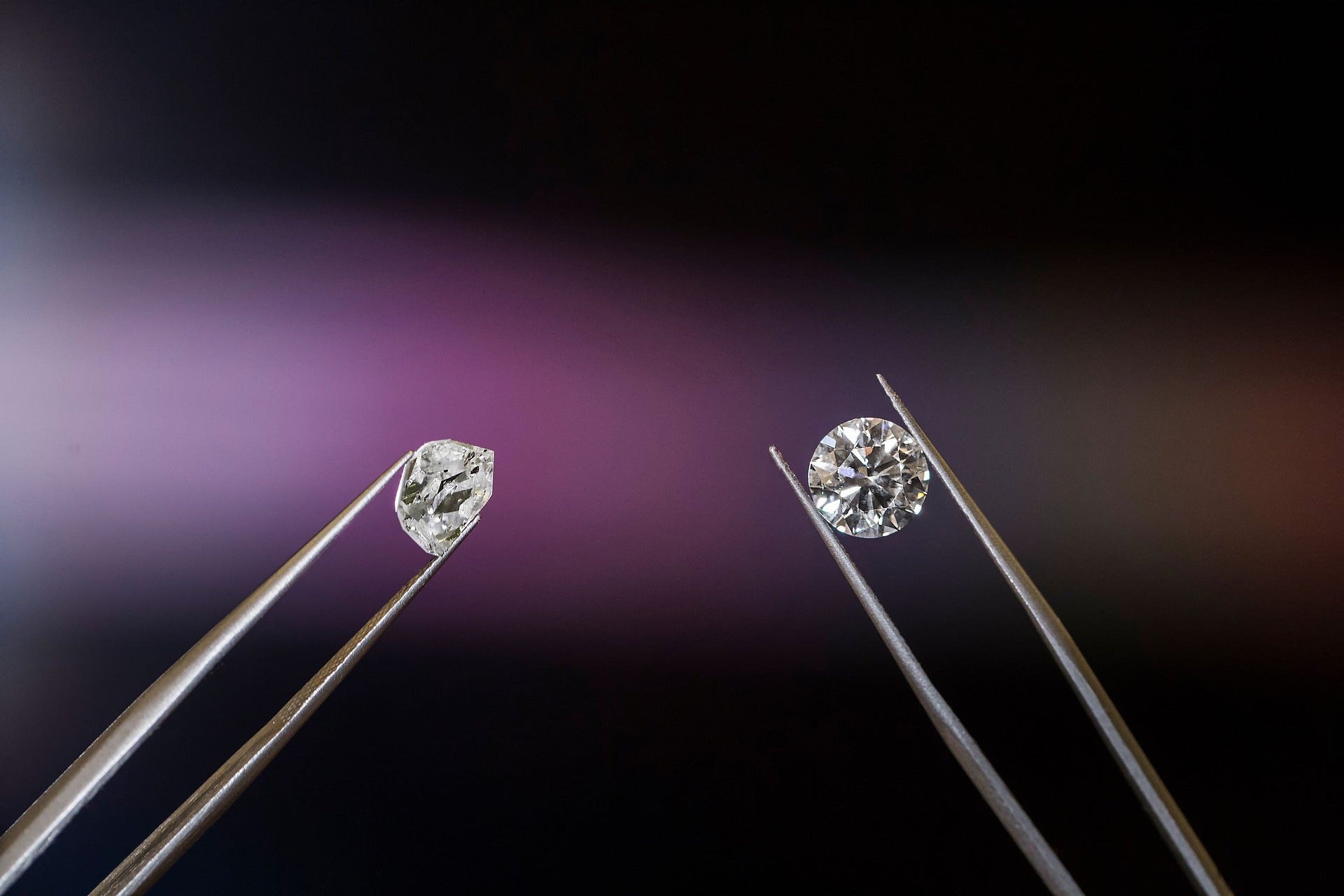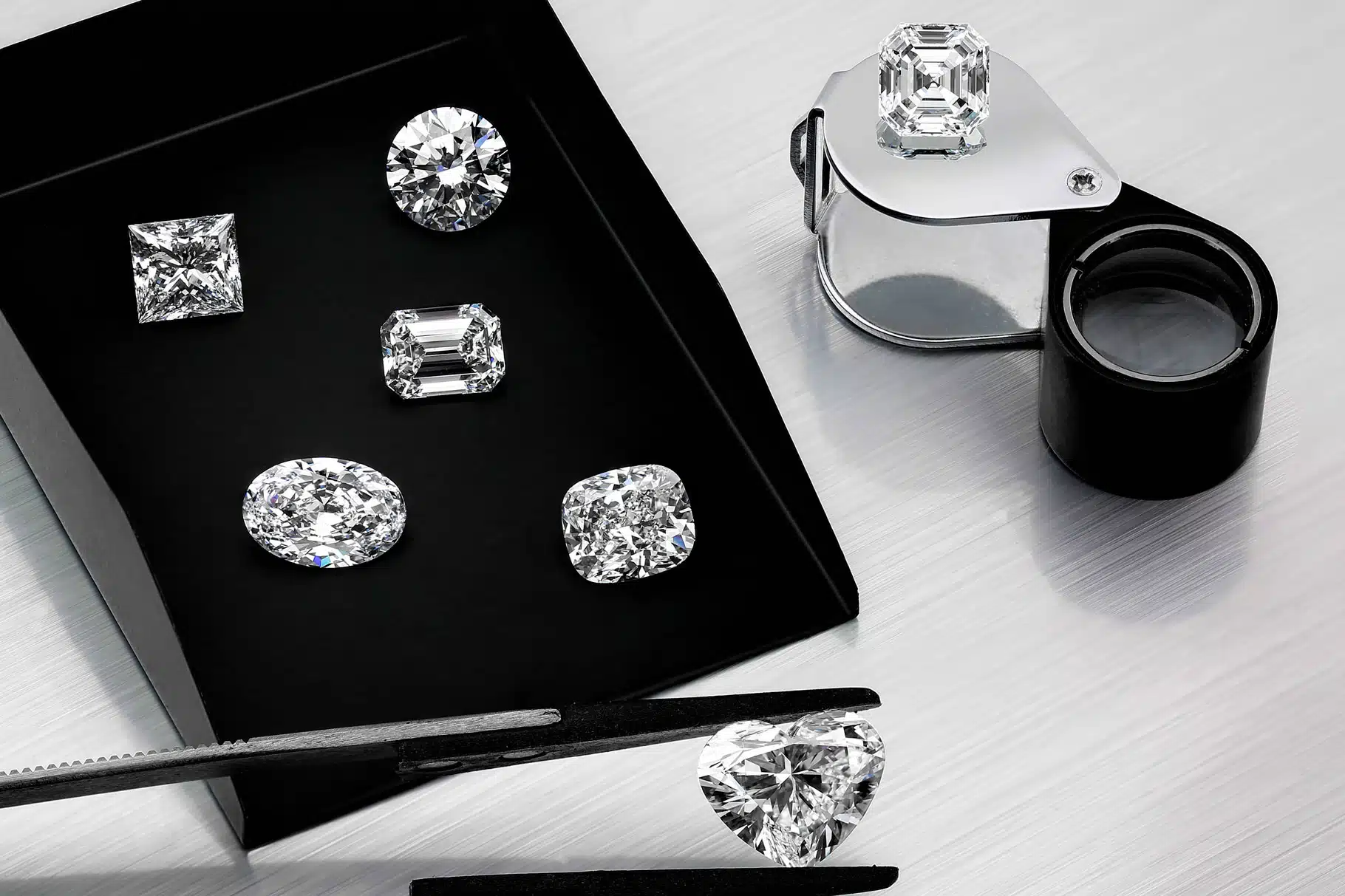The diamond industry has long been associated with a variety of ethical issues, one of the most notorious being the problem of blood diamonds. Also known as conflict diamonds, blood diamonds are mined in war zones and sold to fund armed conflict against governments. These diamonds have caused immense human suffering, environmental degradation, and significant harm to entire communities. However, with the rise of man-made diamonds (also called lab-created or lab-grown diamonds), consumers now have an alternative that offers beauty without the ethical concerns that surround blood diamonds.
In this article, we will explore the differences between blood diamond and man-made diamonds, highlighting the benefits of choosing the latter when purchasing diamond jewelry.
Table of Contents
ToggleWhat Are Blood Diamonds?
Blood diamonds refer to diamonds that are mined in regions plagued by civil war, human rights abuses, and exploitation. Often, these diamonds are sold to finance armed groups or insurgencies, contributing to ongoing conflict and violence. The term “blood diamond” gained prominence during the 1990s, especially in relation to the civil wars in Sierra Leone, Angola, and other African nations.
Blood diamonds are typically mined under extremely dangerous conditions, where workers—often including children—are subjected to forced labor, poor working conditions, and physical abuse. These diamonds are then smuggled into the global market and sold to fund further violence and warfare.
The ethical concerns surrounding blood diamonds are significant, leading to a global movement to address the issue. In response to consumer demand for ethically sourced stones, the Kimberley Process was introduced in 2003. This certification system was designed to prevent the trade of blood diamonds by ensuring that diamonds sold internationally come from conflict-free regions. However, critics argue that the Kimberley Process is not fully effective, and blood diamonds continue to enter the market, albeit illegally.
What Are Man-Made Diamonds?
Man-made diamonds, also known as lab-created diamonds, are diamonds that are produced in a controlled laboratory environment. These diamonds are grown using advanced technologies, such as High Pressure High Temperature (HPHT) and Chemical Vapor Deposition (CVD), which simulate the natural conditions under which diamonds form beneath the Earth’s surface.
Unlike blood diamonds, man-made diamonds do not contribute to conflict or human rights abuses. They are ethically produced, conflict-free, and do not involve the environmental degradation or exploitation associated with diamond mining. Lab-created diamonds are also indistinguishable from mined diamonds in terms of appearance, hardness, and chemical composition, offering the same brilliance and durability.
The Advantages of Man-Made Diamonds Over Blood Diamonds
1. Ethical and Sustainable
The most significant advantage of man-made diamonds is their ethical and sustainable nature. man made diamonds are produced in controlled, environmentally friendly conditions, with minimal impact on the planet. The mining of natural diamonds, especially blood diamonds, often results in deforestation, soil erosion, and damage to ecosystems. Additionally, the labor involved in the mining of blood diamonds frequently exploits workers, including children, in dangerous and inhumane conditions.
In contrast, man-made diamonds are created without the need for harmful mining practices. By choosing lab-grown diamonds, consumers are making a conscious decision to support ethical production methods that respect human rights and the environment.
2. Affordable Without Sacrificing Quality
Man-made diamonds are typically more affordable than their mined counterparts, which can be significantly overpriced due to the costs associated with mining, transportation, and scarcity. Lab-grown diamonds are made in a fraction of the time it takes for natural diamonds to form, which makes them more cost-effective to produce.
For consumers, this means that they can purchase a larger or higher-quality diamond at a much lower price. Lab-created diamonds offer the same brilliance and physical properties as natural diamonds, so buyers can enjoy the luxury of diamonds without the premium price tag.
3. Conflict-Free Guarantee
One of the main reasons consumers are drawn to man-made diamonds is their conflict-free guarantee. Lab-created diamonds are not sourced from war zones, and they do not contribute to the funding of armed conflicts or human rights abuses. Unlike blood diamonds, which can be difficult to trace, man-made diamonds come with certification that guarantees they are free from conflict.
This assurance of ethical sourcing gives consumers peace of mind, knowing that their diamond purchase is not contributing to violence, exploitation, or environmental harm. By choosing man-made diamonds, consumers can align their values with their purchasing decisions, supporting a more responsible and transparent industry.
4. Environmental Impact
Mined diamonds, particularly blood diamonds, can have a devastating environmental impact. Diamond mining requires large-scale excavation, leading to habitat destruction, water pollution, and soil degradation. Furthermore, mining operations often consume massive amounts of energy and water, contributing to the depletion of natural resources.
On the other hand, lab-created diamonds have a much smaller environmental footprint. While the production of man-made diamonds still requires energy, the environmental impact is significantly lower than that of traditional mining. By opting for man-made diamonds, consumers can reduce their carbon footprint and contribute to more sustainable practices in the diamond industry.
5. Traceability and Transparency
One of the challenges with blood diamonds is that it can be difficult to trace their origin and verify whether they are truly conflict-free. Although the Kimberley Process aims to ensure that diamonds entering the market are not linked to conflict, its effectiveness has been questioned, as some diamonds still slip through the cracks and end up in the global supply chain.
Man-made diamonds offer full traceability and transparency. Since they are created in a controlled environment, their origin is always known, and they come with certification that verifies their ethical production. This transparency allows consumers to make informed decisions and ensure that their diamond purchase aligns with their personal values.
Choosing Between Blood Diamonds and Man-Made Diamonds
For those who care deeply about the ethical implications of their purchases, man-made diamonds present a far superior option to blood diamonds. Lab-grown diamonds are produced without the exploitation of people or the destruction of the environment, offering consumers the opportunity to own beautiful, high-quality diamonds without the ethical concerns associated with mined stones.
While blood diamonds may still enter the market through illegal channels, man-made diamonds provide a safer, more ethical alternative that guarantees peace of mind and aligns with sustainable practices. Additionally, with the affordability and quality of lab-created diamonds, choosing a man-made diamond is not only an ethical choice but a practical one as well.
Conclusion: A More Ethical Future with Man-Made Diamonds
In conclusion, the rise of man-made diamonds offers a transformative solution to the longstanding issues associated with blood diamonds. By choosing lab-grown diamonds, consumers can enjoy all the brilliance and beauty of a diamond while supporting ethical practices and sustainability. With the availability of conflict-free, affordable, and environmentally friendly diamonds, man-made diamonds are an excellent choice for those who want to make a positive impact through their purchasing decisions.
As awareness about the impact of blood diamonds grows, more and more individuals are turning to man-made diamonds as a responsible alternative. By making the switch, you’re not just investing in a beautiful piece of jewelry—you’re contributing to a future where diamonds are no longer associated with violence, exploitation, or environmental harm.




